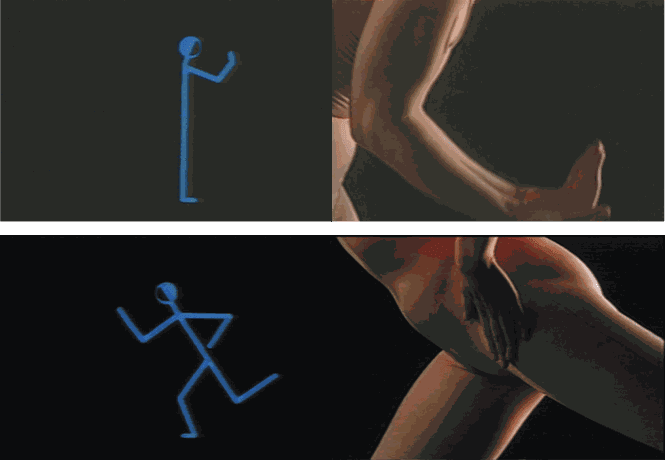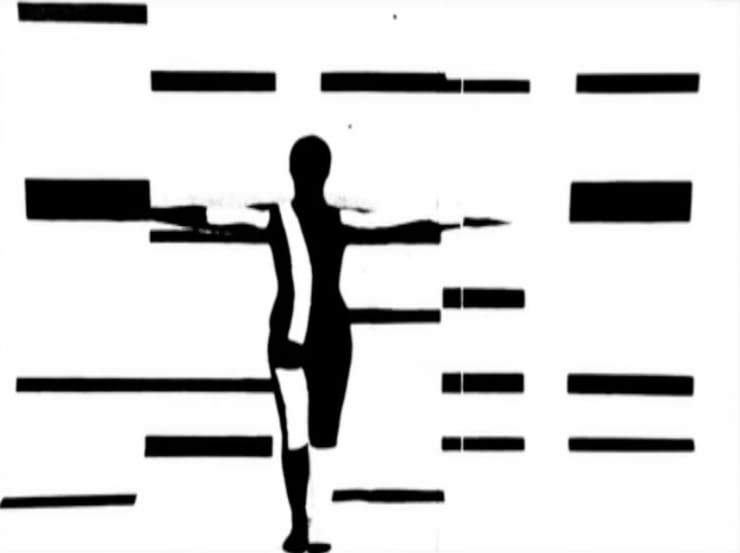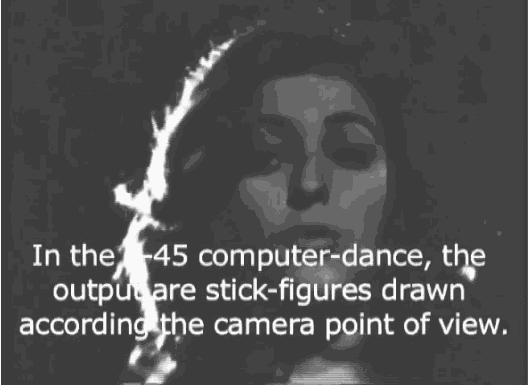Analivia Cordeiro Brazilian, b. 1954
Overview
1954, São Paulo, Brazil. Lives and works in São Paulo, Brazil
Analivia Cordeiro develops her artistic research in a hybrid and multidisciplinary way, with a particular interest in the study of corporal language, focused on various aspects of expression and consciousness, including their relationship with digital media. Her experience with dance began in her childhood and has, ever since, been the central guiding point of her career in the visual arts. A pioneer in the so-called computer dance field and multimedia performance, the artist began to use the computer as a tool for understanding artistic processes as early as 1973, when she became Brazil’s first video artist with the work M3X3, which already foresaw the representativity of information technology in the everyday life of society. In 1981, she created the Nota-Anna software, an application for transcribing the body’s motion, resulting in scientific analyses for the tracing of corporal movements. Analivia’s investigation works with the organic/artificial duality in body language and, in parallel, the control/freedom duality in its relationship with technology, considering corporal language as a semantic filter for reality, an intermediary for dialogue with the public. This has led to her innovative productions in both art and technology, which kindle multisensorial experiences and also work with health, affectivity and self-knowledge , dialoguing with technology, art, the body and the mind.
Biography
1954, São Paulo, Brazil. Lives and works in São Paulo, Brazil
Analivia Cordeiro develops her artistic research in a hybrid and multidisciplinary way, with a particular interest in the study of corporal language, focused on various aspects of expression and consciousness, including their relationship with digital media. Her experience with dance began in her childhood and has, ever since, been the central guiding point of her career in the visual arts. A pioneer in the so-called computer dance field and multimedia performance, the artist began to use the computer as a tool for understanding artistic processes as early as 1973, when she became Brazil’s first video artist with the work M3X3, which already foresaw the representativity of information technology in the everyday life of society. In 1981, she created the Nota-Anna software, an application for transcribing the body’s motion, resulting in scientific analyses for the tracing of corporal movements. Analivia’s investigation works with the organic/artificial duality in body language and, in parallel, the control/freedom duality in its relationship with technology, considering corporal language as a semantic filter for reality, an intermediary for dialogue with the public. This has led to her innovative productions in both art and technology, which kindle multisensorial experiences and also work with health, affectivity and self-knowledge , dialoguing with technology, art, the body and the mind.
Analivia Cordeiro holds a BA in architecture from the Faculdade de Arquitetura e Urbanismo of USP (1976, São Paulo), an MA in multimedia from Unicamp (1996, Campinas-SP) and a PhD in communication and semiotics from PUC (2004, São Paulo-SP); she has furthermore done postdoctoral work for the Universidade Federal do Rio de Janeiro (UFRJ, 2010, Rio de Janeiro) and for the Universidade de São Paulo (USP, 2018, São Paulo). Between 1977 and 1979 she studied contemporary dance and choreography at Merce Cunningham Dance Studio in New York and at Alwin Nikolais Studio. Recently, the artist featured her first major solo international exhibition, at the ZKM - Museum of Contemporary Art (2023, Germany) and Centro Atlántico de Arte Moderno, Las Palmas (2023, Spain), besides participating in a show at LACMA (2023, USA). The shows and events in which she has participated notably include the 1973 International Festival of Edinburgh; the 12th Bienal de São Paulo (1974, São Paulo, Brazil); LatinAmerica 74, at Institute of Contemporary Arts (1974, London, GB); International Conference Computer & Humanities/2, at the University of Southern California (1976, Los Angeles, USA); Art of Space Era, at Von Braun Civic Center of Huntsville Museum of Art, 1978; Brasil Século XX, Bienal de São Paulo (1984, Brazil); Arte e Tecnologia, at Itaú Cultural (1996, São Paulo, Brazil); the 27th Annual Dance on Camera Festival (1998, New York, USA); SIGGRAPH (2008, USA), B3 Biennale of Moving Images – Expanded Senses, at Museum Angewandte Kunst (2015, Frankfurt, Germany); Video art in Latin America, Laxart (2016–2017, Los Angeles); Radical Women: Latin American Art, 1960–1985, at Hammer Museum (2017, Los Angeles, USA), Brooklyn Museum (2018, New York, USA) and the Pinacoteca de São Paulo (2023 and 2018, São Paulo, Brazil); Coder le Monde, at Centre Georges Pompidou (2018, Paris, France); and Control and Chance: Art in the Age of Computer, at Victoria & Albert Museum (2018, London, GB). Her work figures in important collections, including those of the Museum of Fine Art, Houston (USA), Victoria & Albert Museum Collection (GB), the Museum of Modern Art of New York (MoMA-NY, USA), the Museo Nacional Centro de Arte Reina Sofia (Spain), the Museum of Concrete Art (Ingolstadt, Germany), MAC-USP (Brazil), the Pinacoteca do Estado de São Paulo (Brazil), Itaú Cultural (Brazil), and the collection of Oskar Schlemmer (Switzerland/Germany). Among her various activities, the artist is a member of the International Dance Committee (IDC), of UNESCO.
Works
Exhibitions










